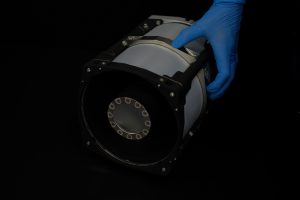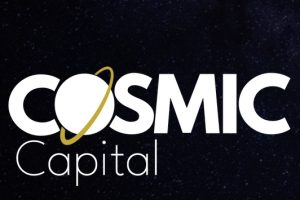Japan’s domestic market is booming, the local companies have cash to invest in new capacity, they have cutting edge process technology delivered by industry consortia and the electronics industry’s macro trends are moving in their favour.
Last year, Japanese domestic semiconductor consumption overtook US domestic semiconductor consumption for the first time in over a decade, reflecting the change in shift from a PC dominated semiconductor market to a digital consumer led semiconductor market.
The PC industry was an US-dominated industry where Intel and Microsoft set the standards and took most of the profit with a host of companies supplying components and software on a ‘horizontal’ industry model.
The digital consumer industry is a Japan-dominated industry where the industry is organised on a ‘vertical’ model of companies, which each have total control of the product from chip design to chip manufacturing to end product assembly.
For the Japanese semiconductor industry, this return to favour of the integrated, vertical industry model is a harbinger of good times.
“The Japanese semiconductor industry is coming back,” says Toshihiko Ono, president of Fujitsu’s electronics devices business group, “and the reason is that with the 0.13µm and 90nm and future technology generations the fabless business model no longer works, in my opinion.”
“For the last ten years, everything in the US and Europe followed the fabless/foundry, horizontal business model,” says Sartoru Ito, president of Renesas Technology, the world’s third largest semiconductor company, “now the industry is coming back to the vertically integrated business model.”
“The market is shifting from a focus on the PC – which is an American dominated area – to a focus on digital consumer (DC) products where Japan is dominant,” says Dr Tsugio Makimoto, chief technology officer of the networking group at Sony Semiconductor.
The effect of the PC to DC transition is that the vertically integrated semiconductor model will gain strength at the expense of the horizontal fabless/foundry model.
“As structures get smaller, mismatches between design and manufacturing magnify fluctuations in the outcome of the production process,” explains Makimoto, “so design has to understand the capabilities of manufacturing which are constantly changing. So if manufacturing is not good enough, the design people can build in safety factors to take account of the limitations of the process. That’s the benefit of the synergetic effect of having control over everything from design to manufacturing. This is why 0.13µm was delayed on the foundry side because of the miss-matching of the design and the manufacturing side.”
IBM agrees. In February, Dr Tom Reeves, v-p and general manager of IBM’s Asic division, said the semiconductor industry generally is getting a 50 to 60 per cent first-time-right rate for 0.13µm silicon, but the foundry industry is only getting a five to ten per cent first-time-right rate.
So, as structures get smaller at 0.13µm and below, the difficulties on matching design to manufacturing are increased, so favouring the vertical industry model and consequently favouring Japan. “The strength of Japan is in the vertical model because of our culture – valuing teamwork and paying attention to very small details,” says Makimoto.
With the long reign of the PC as the major market for semiconductors coming to an end, the major semiconductor market for the next decade, or even two, will be DC products: digital TV, digital video recorders, DVD, camera-phones, games machines, digital cameras, camcorders, car navigation systems etc, which were first developed and marketed in Japan. Adding to the DC market is that products like mobile phone handsets, PDAs and notebook/handheld computers are becoming DC products.
The ‘digital consumer’ tag is a bit of a misnomer. “There’s no difference between ‘analogue’ consumer products and ‘digital’ consumer’ products,” says Dr Susumu Kohyama, corporate senior v-p at Toshiba Semiconductor. “The quality of the consumer’s experience comes mostly from the quality of the picture and the quality of the sound and those are totally analogue.”
Whatever you like to call it, the market effect of DC is significant. Last year, for the first time, semiconductors sold for use in consumer, communications and automotive products were worth more than semiconductors used in computers, according to World Semiconductor Trade Statistics (WSTS). That has huge implications for Japan.
“There’s been no major market in Japan for the last ten years,” says Ito of Renesas, “now digital consumer is a major market segment and Japan is clearly leading that, and, from the semiconductor point of view, we have major customers here and we have the technologies to support them, such as high density packaging and low power.”
“The digital consumer type of business is very different from the PC business,” adds Ito, “the PC business is more like box-making with a clear standard from Intel and Microsoft. If you have a limited expertise in one area you can be part of it. It’s characterised by fragmented expertise around a standard. Digital consumer has no standard. How you make the product attractive to consumers decides the competitiveness of the product.”
Dr Hajime Sasaki, chairman of NEC, says: “The American players are coming from the PC side, the Japanese players are coming from the TV side. Going from a PC approach to a TV approach is more difficult than from TV to PC because of the structure of the market.”
While the US industry will have to adjust to that structure; the Japanese industry already has it. A big advantage of the DC consumer products for the semiconductor industry is that they have much greater value of chip content than the old ‘analogue’ consumer products even if much of the value-added in DC products comes from analogue components.
DC products can use up to ten times more semiconductors than the old ones. Semiconductors in film-based cameras were worth an average $4, in digital cameras it’s around $40. Semiconductors in analogue TVs are worth $20, in digital TVs it’s $110.
In products like car navigation systems the semiconductor content, at around $100, represents 17 per cent of the product’s end value. In mobile phones a chip content of $40 represents 20 per cent of end product cost.
So the new, chip-intensive, DC products will help drive semiconductor industry output and, with the current semiconductor upswing being driven by consumer products, the Japanese semiconductor industry has the advantage of having most of the world’s consumer electronics giants on its doorstep.
Sony, for instance, uses $8bn worth of semiconductors a year. Others, like Matsushita, Toshiba, NEC, Hitachi, Sanyo, Fujitsu, Mitsubishi and a host of other Japanese producers of electronic consumer goods keep Japan at the top of the consumer electronics industry.
Collectively Japanese companies make over 80 per cent of the world’s camcorders, over 70 per cent of the world’s games machines and camera phones, and over 60 per cent of the world’s digital cameras and car navigation units.
Supplying these companies with semiconductors could set the Japanese semiconductor industry on a 20 year-long roll.
“In the past, the technology and market-place in Japan, south east Asia, Europe and the USA were all different – consumer in Asia, communications in Europe and computer in the US – and Toshiba operated in all those technologies and markets. But now those technologies and markets are converging and so Toshiba can offer all those technologies and all that knowledge,” says Toshiba’s Kohyama.
Another factor driving the Japanese upswing is the effect of various industry/academia/government consortia over the past few years. “In the case of technology development, government investment helps to overcome Brick Walls,” says NEC’s Sasaki. “In the 1990s the semiconductor industry had a Brick Wall at 100nm. We had similar consortia in the 1970s when we had a Brick Wall at 1µm. Once it was overcome, the technology could be refined without basic changes.”
In the 1990s, the US and the EU started all sorts of industry support activities, says Ito of Renesas: “Makimoto did a report to the Japanese government which resulted in the SNCC (Semiconductors in the New Century Committee). Makimoto was the central guy in that initiative.”
The SNCC gave rise to a number of industry consortia in which the Japanese government matched industry financial contributions 50/50. One of them was the ASPLA (Advanced SOC Platform Technologies Activity) which helped companies make the transition into 300mm/90nm manufacturing.
Others were ASCA (Advanced Semiconductors through Collaborative Achievement), HALC (High Performance and Agilent Clean-Room Association) and MIRAI (Millennium Research for Advanced Information Technology).
“The consortia have played an important role in strengthening the basic technology,” says NEC’s Sasaki, “but at the same time we’ve seen a big improvement in the market with three key products – flat panel LCD/PDP TV, the DVD-Recorder, and the digital still camera.”
A sparkling 2003 saw the Japanese domestic semiconductor market grow 40 per cent, and allowed the Japanese semiconductor companies to replenish their financial coffers giving them the opportunity to invest in new technologies and new manufacturing capabilities.
“Sony spent $1.2bn in 2003 – the fourth highest capital spend in the industry. Semiconductor investment is the highest priority in the company,” says the firm’s Makimoto.
NEC, with $1bn from its sale of shares and another $1bn gained from operations has a $2bn pot to invest in a new 300mm 90/65nm wafer fab.
Toshiba’s semiconductor division generated $1bn of positive cash-flow last year and announced the ground-breaking on a new 300mm 90/65nm wafer fab in April.
Fujitsu, without the huge cash balances of Toshiba and NEC, has nonetheless come up with a strategy to build a 300mm 90/65nm fab. It has persuaded partners to contribute towards the cost.
The reason why those companies are ready to put up their money is because they get access to Fujitsu’s 90nm technology – which claims to be the best in the world for low power. That’s because it has solved the problem bedeviling everyone else’s 90nm process – current leakage.
“We have achieved high speed with low leakage,” says Fujitsu’s Ono. “Data from an American customer shows that, in our 90nm process, the speed has been increased by 30 per cent and the current has been reduced by one fifth, compared to other foundries.” ‘Other foundries’ includes, says Ono, IBM, TSMC and UMC.
Japan does not see the moves of the US computer companies into DC products as a threat.
“It’s very cheap stuff – just assemble and ship,” says Toshiba’s Kohyama, “we can’t yet know the impact on products like low-end flat panel TV, but it may accelerate the commoditisation of the product. I wouldn’t want one in my living-room – it would spoil the atmosphere.”
Ito of Renesas reckons: “I think the US will have some success in the consumer business but not to the extent that they succeeded in the PC world. They will be viable competitors, but not dominant.”
Distribution may also be a problem for the US companies. “The US companies most likely won’t have direct channels to the customer through stores – they will sell via the Internet,” says Kohyama, “if customers require any more detailed explanation of products they can’t get it.”
Can the Japanese semiconductor industry recapture its glory days of the late 1980s when they had six companies in the world semiconductor top ten and over 50 per cent world market share? No one is predicting that. Yet. But the mood bubbling away in Tokyo is bullish.
 Electronics Weekly Electronics Design & Components Tech News
Electronics Weekly Electronics Design & Components Tech News



